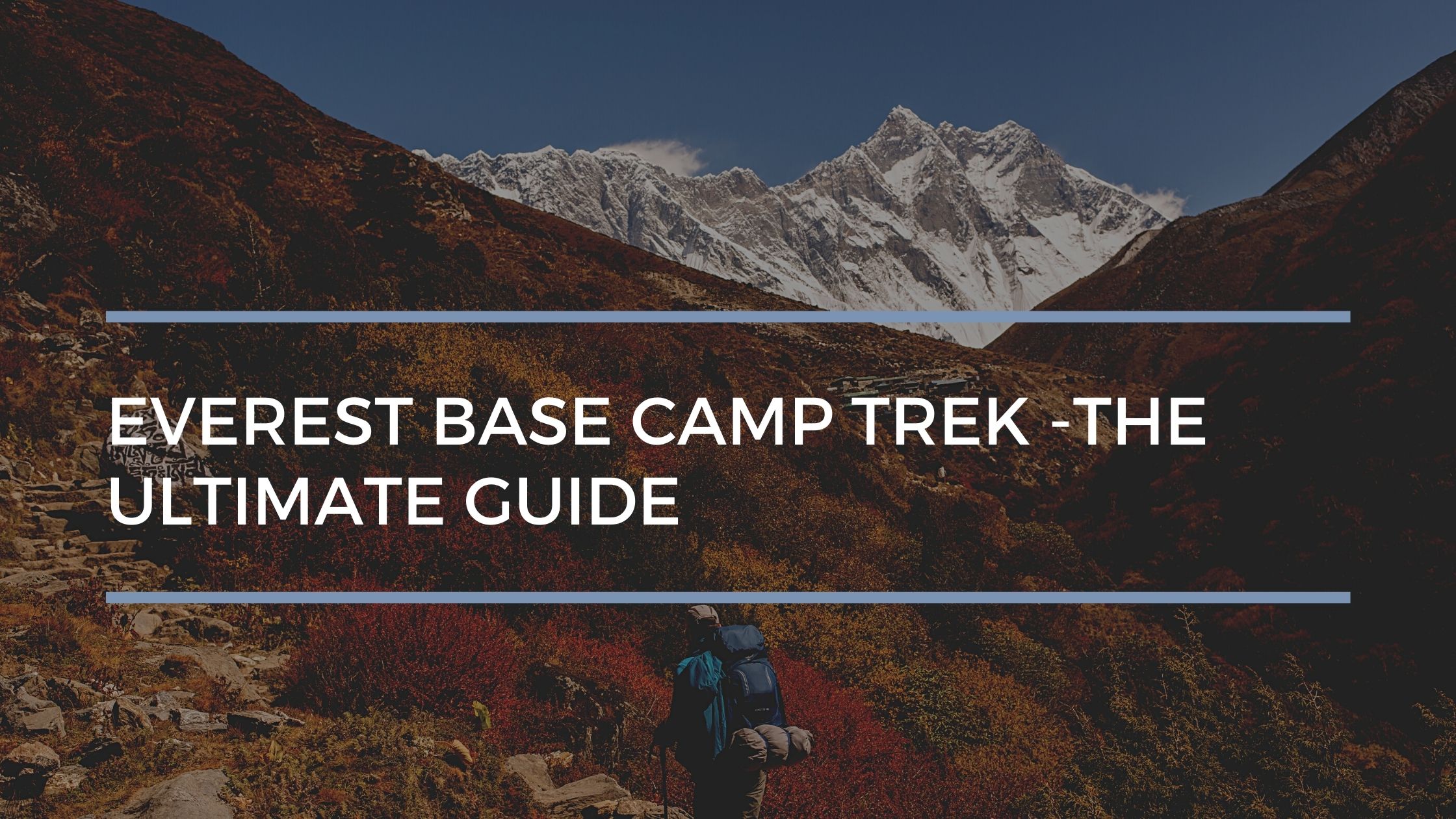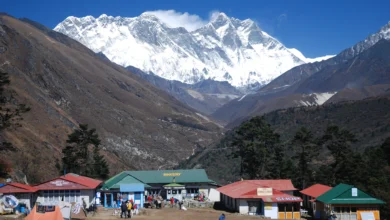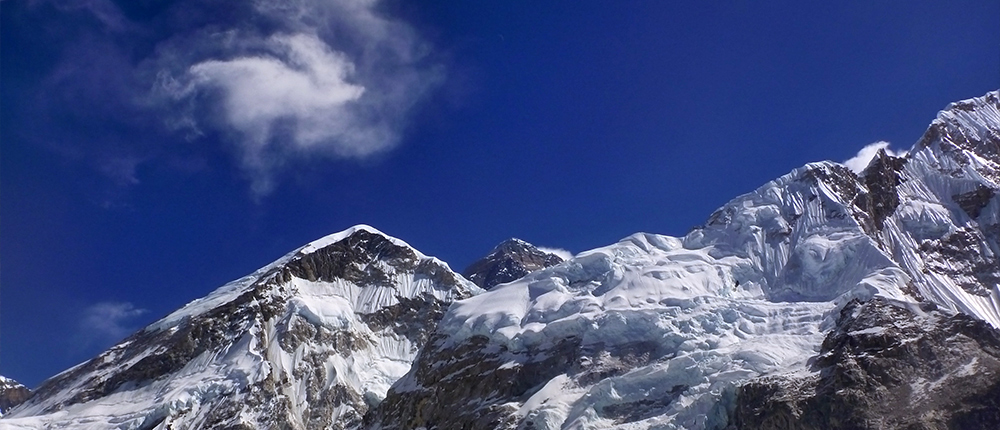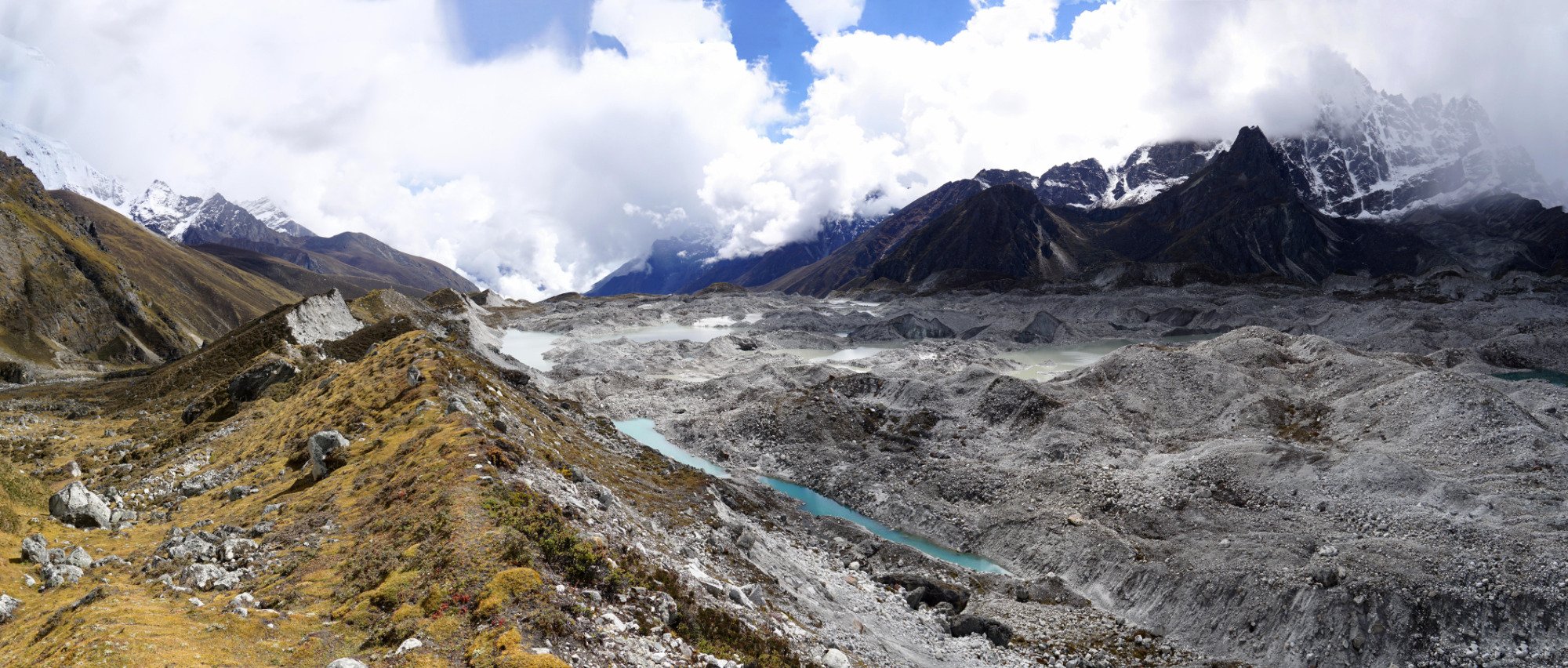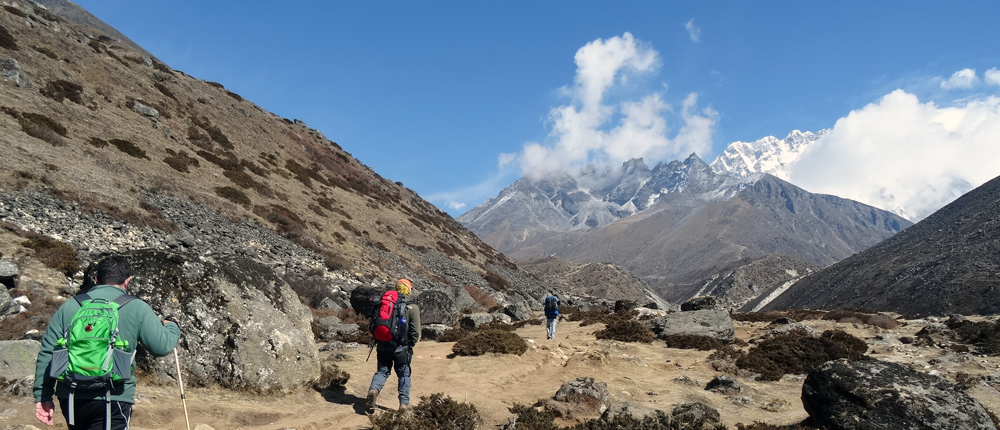ArticleEverest Treks
Everest Base Camp Trek -The ultimate Guide
Everyone around the world knows that Mount Everest (8,848m) is the highest mountain in the world and it lies in the Khumbu region of Nepal.
In fact, the existence of Mt. Everest has made Nepal one of the most popular trekking destinations in the world.
Every year Mt. Everest receives hundreds of visitors. It’s the dream destination of almost all adventure enthusiasts around the world.
However, the dream destination can turn into a disaster in the absence of proper guidance. Therefore, to save you from a possible disaster, we would like to share some useful and important information related to the Everest Base Camp Trekking.
Highlights of the Everest Base Camp Trekking:
Although Mt. Everest is the major attraction of the Everest Base Camp trek, it’s not the only place to put your cameras.
With powerful zoom and manual mode controls, you’ll take some breathtaking shots of landscapes and rich pastures on this spine-tingling journey.
The scenic flight from Kathmandu to Lukla is the trek’s first highlight, followed by a challenging and liberating hiking path.
As your plane takes off from Kathmandu Airport, you’ll enjoy a stunning aerial view of the landscape below.
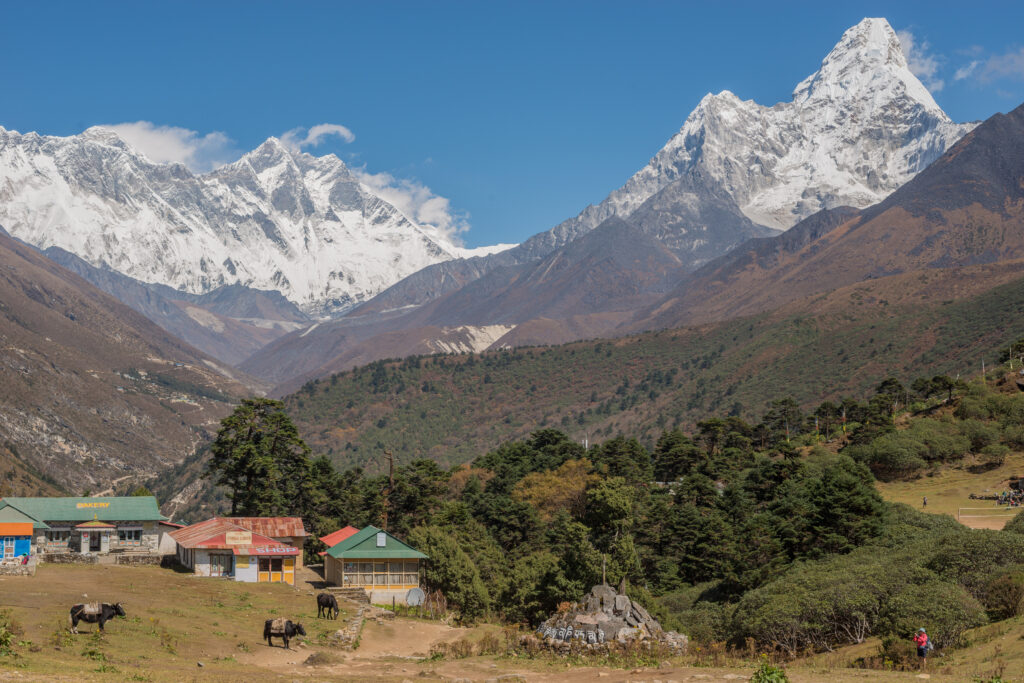
Imagine, you stand atop Mount Everest with the experience of watching the cool kids fly by. Give yourself about 30 minutes of viewing time before boarding one of the most dangerous airports in the world (Tenzing Hillary Airport in Lukla). The view is more breathtaking than it sounds!
Along the path to Everest Base Camp, you’ll see the smaller villages of the Sherpa. These villages feature a simplified living style and offer a glimpse into this community’s customs and spirituality.

The Khumbu region and the Sagarmatha National Park protect many alpine plants and animals, some rare. Along with the Sherpa community, it provides home to diverse species of wildlife.
To trek to the Everest Base Camp, head towards Namche and Tengboche as they are the key stops on your way. Namche is a village filled with traders and is popular for its scenic views.
Tengboche is home to an old Sherpa monastery and provides tourists with unforgettable views of Everest and other peaks.
Everest Base Camp Trek Video
Hike further from Tengboche and the attractions like Khumbu Glacier, Kala Patthar (5,545m) -the most accessible point to view Mt Everest, the Khumbu Icefall and the Everest Base Camp await your arrival.
Moreover, apart from the mighty Mt. Everest (8,848m), the view of Lhotse (8,516m), Nuptse (7,855m), Cho Oyu (8,153m), Ama Dablam (6,856m), Pumori (7,161m), Tawache (6,367m), Khongde Ri (6,011m), Thamserku (6,723m), Changaste (7,550m), Lingterin (6,679m), Kantega (6,685m), Kusum Khangaru (6,367m), Khumbila (5,761m), Cholatse (6,335m), Lobuche (6,145m), Pokalde (5,806m), Honku South (6,119m) and the view of the other peaks will make you feel, ‘Once is definitely not enough’.
These attractions can be enjoyed by anyone looking to trek the regular Everest Base Camp Trail. Starting Lukla, it takes 13 days to reach the base camp and get back to Lukla.
Nevertheless, if you have time, energy, and willingness to explore more areas of the Khumbu region along with the Everest Base Camp, then you have the option to go for either the Everest Three Passes Trekking Packages that will allow the trekkers to enjoy the three high passes: Renjo La (5,360m), Cho La (5,420m) and Kongma La (5,535m)
or the Everest Base Camp trek with Gokyo Lake and Chola pass that presents the opportunity to enjoy the famous Gokyo Lakes and the one of the three high passes, the Chola pass. The choice is yours! Moreover, the alternate to flying to Lukla is choosing the trail via Jiri. Via Jiri to Lukla is entirely on foot.
Food and Water during the Everest Base Camp Trek
During the trek, proper food intake is essential. It will give you the strength to keep going. Usually, three meals (Breakfast, Lunch, Dinner) and tea/coffee are served, during the Everest Base Camp trek. The food will be served as per the teahouse menu. Also, all meals are served in large portions to satisfy large trekking appetites.
Breakfast: The breakfast will be served early in the morning, from around 7:30 to 8:00 am. Oatmeal boiled in water, French toast served with jam, honey, or butter, eggs cooked in your preferred style, pancakes, Muesli, sprouted beans, cheese, and Tibetan bread or Chapati are the breakfast options. The breakfast is served in the lodge itself.
Lunch: The lunch will be served around the afternoon, like around 12 noon to 1:00 pm. The lunch will be served in one of the teahouses en route and as per the teahouse menu.
Usually, traditional Nepali food (Dal, Bhat, Tarkari, and Aachar), which means boiled rice, lentil soup, vegetable, and pickle are the best lunch options during the trek.
Meat cooked in Nepali style will also be served for lunch (optional). This combination is very nourishing, light, healthy, and perfect to recharge your body’s batteries.
However, this national food is not the only option, during the Everest Base Camp Trek. The teahouse menu offers an extensive selection of meals for lunch, like Tibetan bread, steak, sandwiches, noodles, Momo, pastasandmacaronis, pizza,s and many more. However, the teahouse menu will differ depending on the altitude. The varieties lessen with the increment in altitude.
Dinner: The dinner will be served in the lodge, where we stop overnight. It will be served from around 7:30 to 8:30 pm. Dinner will be as per the lodge menu and will be similar to the lunch. You can either go for traditional Dal Bhat or try some western food mentioned on the menu.
Water: Bottled water is available from Lukla to the Everest Base Camp, but, the price hikes with the altitude.
However, trekkers can fill their water bottle with tap water that is sourced from a natural spring after boiling it or adding purification drops or pills (extra money will be charged if you want to go for the boiling option).
(It’s difficult to find meat after Namche Bazaar. Although the meals are enough to refill your energy, you can bring some snack food like peanuts, chocolate bars, and energy bars that will add more strength to your body, while walking the Everest Base Camp trail.
Moreover, if you are looking to enjoy 5-star quality food the Everest Ultimate Luxury Treks can be the best choice.)
Accommodation during the Everest Base Camp Trek
Basic lodges, guest houses or the teahouses are the accommodation options, during the Everest Base Camp Treks. Some agencies also offer camping options, on request.
The rooms of these accommodations are very basic with usually two comfortable beds, very little furniture, and some hooks on the wall.
Some accommodations provide attached baths and restrooms, however, some provide a couple of squat-style and shared ones. Some hotels and teahouses provide western-style restrooms with hot shower facilities but are normally expensive.
Apart from the dining area, no other rooms will be heated or will have an AC facility, therefore, to keep yourself warm, we recommend you bring your own sleeping bag. Most of the accommodations offer an attached bath or a common bathroom with a hot shower. However, in the absence of a hot shower, you can for a bucket of hot water for the shower by paying extra money.
(Note: If you choose to dine elsewhere than the accommodation’s restaurant, the lodges will either double the price of the accommodation. 5-star accommodations are also available in the Everest region for those who do not want to compromise on the luxuries, during the trek. For this you need to choose the Everest Ultimate Luxury Trek.)
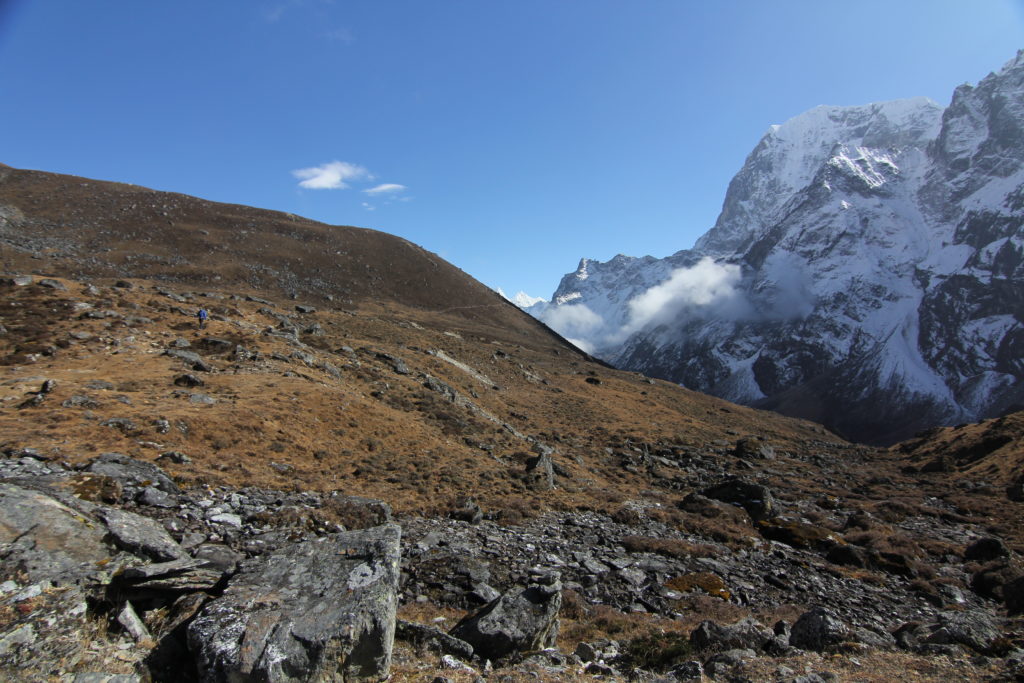
Transportation during the Everest Base Camp Trek
The southern base camp of Mt. Everest is not accessible via road. The Khumbu region is connected to Kathmandu via flight from Kathmandu to Lukla. From Lukla to the base camp is entirely on foot. However, in the case of emergencies, helicopter is rescue is possible.
Is it difficult to trek to the base camp of Mt. Everest? Do I need to be an experienced trekker?
Although reaching the base camp of Mt. Everest is not easy, it is also not that difficult. The trek can be completed by any physically fit individual with excellent stamina and a strong mental determination. There is a chance of getting altitude sickness;
However, this can be reduced by adding two extra days to your trip for acclimatization. Furthermore, no prior experience is required to plan this trekking in Nepal, but if you do, it will undoubtedly contribute to the trek’s success.
Do you recommend solo traveling or even solo female traveling?
Solo travel, or solo female travel, is unquestionably possible. During the peak season, the trail is clogged with hikers and mules transporting goods.
You won’t even feel like you’re traveling alone. However, for your own safety, we recommend that you travel in groups. Trekkers who do not have a group can join an existing one. Joining groups allows you to save money on lodging and shared amenities.
What happens if the flight from either Lukla or Kathmandu is delayed?
The flight schedule is determined by weather conditions in the Himalayas, and weather conditions in the Himalayas are highly unpredictable.
As a result, in the event of a delayed or cancelled flight, we ensure that our clients have the opportunity to board the next earliest flight. The itinerary will remain the same. Furthermore, it is recommended to add a few extra days to the trip before booking the package to be on the safe side.

What is the maximum weight that a porter is allowed to carry during the trek?
The maximum weight the porter will carry during the Everest Base Camp is 30kg. Every two trekkers will get a porter. So, 15 kg is the maximum weight, the trekker is allowed to pack for the Everest Base Camp Trek.
How do I get my body prepared for the Everest Base Camp Trek?
Although the Everest Base Camp trek is technically easy, the route demands physical fitness, excellent stamina, and strong determination.
Therefore, before planning this trek in Nepal, you should first consult your doctor regarding your current fitness level, required vaccination, medications, and the necessary guide walk and exercises that you need to start, before leaving for the trek.
In the absence of the doctor, your Local General Practitioner can be your best assistance.
However, you can always prepare your body by doing following exercise at least 4-6 weeks before the trek.
- Cardio exercises like cycling, jogging, running, swimming, or uphill walking by carrying a backpack or similar weight.
- Muscle-strengthening exercises like squats, pushups, pull-ups, and weight lifting.
What should I include in my luggage list?
The following luggage-list should be enough for your Everest Base Camp trek.
Checklist for all seasons:
- Travel documents: passport, visa, travel insurance, air tickets, voucher, passport sized photo
- Binoculars
- Hand Sanitizers
- Reading/writing materials
- Travel games, like chess, backgammon, scrabble
- First-aid kit (containing lip balm, Aspirin/paracetamol, Band Aids/plasters, bandage for sprains, iodine or water purifier, Moleskin for blisters, antiseptic for cuts, anti-bacterial throat lozenges, anti-histamine, Imodium or similar tablets for diarrhea, re-hydration powder, Norfloxacin or Ciprofloxin, antibiotic for Girdia, Diamox and any extra prescription drugs you are currently taking)
- Protein bars, chocolates, dried fruits, candies and snack foods
- Money- cash
- Money bag
- Swiss army knife
- Sleeping bag
- Light weight Towel
- Toiletries (quick drying towel, toothbrush, toothpaste, multipurpose soap, deodorant, nail clippers, face and body moisturizer, feminine hygiene products, small mirror
- Day pack (with waist straps)
- Alarm clock and torch/flashlight/headlamp
- Lighter
- Insect repellent
- Ear plugs and eye mask
- Small padlock
- Small wash towel
- Refillable water bottle
- Sunhat, sunglasses, scarf
- Bag liners
- Sewing kit
- Wind and waterproof shell jacket & trousers (preferably breathable fabric)
- Comfortable walking shoes
- Running shoes or sandals
- Socks: thick wool blend and thin cotton to be worn in combination
- Lightweight thermal gloves
- Underwear and Shorts
- T Shirts 2 or 3
- Long sleeved shirt
- Trekking/Hiking boots with spare laces
- Lightweight long trousers (no jeans)
Special Checklist for winter
- Layered clothing /Thermals and Extra warm clothing during winter (December to March)
- 1 heavyweight or 2 lightweight wool jumper/sweater/fleece jacket
- Fleece wind-stopper jacket (optional)
- Down jacket or down vest
- Fleece or wool trousers/pants
- Heavyweight gloves or mittens – wool or fleeced with a waterproof shell outer
- A four season sleeping bag/sleep sheet
- Thick, warm wool hiking socks
- Gaiters (optional)
Special Checklist for summer
- Lightweight wool jumper/sweater/fleece
- Umbrella/water proof jacket and trousers (May to September)
- Sunscreen lotion with maximum SPF
- Water bottle
What permits do I require in order to get to the Everest Base Camp?
Since the Everest region is not a restricted area, no special permit is required for this trek. However, all trekkers are required to Collect Entry Permit issued by Khumbu Pasang Lhamu Rural Municipality which cost NPR 2000 per person (approx USD 20$)
Mt. Everest is situated within the territory of the Sagarmatha National Park, therefore the trekkers are required to obtain a national park entry permit. Permits are available at Monjo.
When is the best time to plan the Everest Base Camp trek?
the best seasons for planning the Everest Base Camp trek are March to May (Spring) and September to November (Autumn).
The weather is very pleasant during these seasons, the trail is unobstructed, the skies are clear blue, the views are clear, and the climate is just right to support the long hours of walking. Winter is very cold and during monsoon, the trail is slippery, unsupportive, and risky.
How much money should I bring along with me on the trek?
If you travel with a company, the package they provide covers the cost of lodging, meals (breakfast, lunch, and dinner), and tea/coffee throughout the trek.
The extra money will only be used to purchase water, tip your service provider (guide and porter) as a token of gratitude for the services provided, charge your electrical devices, and purchase snacks or medicines; thus, an extra $200 should be enough. We recommend that you carry cash rather than an ATM card.
Suggest me a good place to buy the trekking equipments.
If you are bringing the trekking equipment from your hometown, it’s well and good. However, in Nepal, both branded and normal trekking gears are available in the shops in Thamel. Some of these shops also offer rental options.
Is it safe to carry the electronic devices during the Everest Base Camp trek?
Yes, carrying electronic devices is absolutely safe, during the Everest Base Camp Trek; however, for the protection of the devices, we suggest you bring along an insulating cover. At higher altitudes, the electricity options are very less.
Paid device charging services are offered by most of the teahouses. If this does not sound, cost-effective to you, we recommend you bring spare batteries for your devices.
Do I need a travel insurance? What points should the policy cover?
Yes, travel insurance is a must, if you are planning the Everest Base Camp Trek. Your travel insurance should cover:
- The extra expenditures caused by various health issues, injuries or accidents.
- The cost of the ambulance, helicopter rescue, hospital charges, medical treatment cost, cost of the medicine, doctor’s fee and the repatriation cost.
- the extra activities
- misplaced luggage, theft and liability, and cancellation
- The treks that go over 5000m
Is it possible to get the Nepal Visa on arrival?
Yes, it is possible to get the Nepal visa on arrival at the Tribhuvan International Airport. If you are applying for 15 days, then the visa charges will be $30, for 30 days the charges will be $50 and if you are looking for 90 days the visa charges will be $100. Indian nationals do not require any visa to enter Nepal, while for the Chinese nationals the visa is free.
(Please note: The government of Nepal does not provide on arrival visa to the nationals from Nigeria, Ghana, Zimbabwe, Swaziland, Cameroon, Somalia, Liberia, Ethiopia, Iraq, Palestine, Afghanistan and Syria.)
How do I get to the hotel from the Airport?
If you have paid for arrival transfer, one of the company representatives will be awaiting your arrival outside the luggage hall to greet you and transfer you to the hotel booked for you in Kathmandu. If you haven’t booked for the arrival and departure transfer, you can hire one of the airports taxis to get to the hotel.
What if I get sick or injured during the trekking?
Our trekking guides are First Aid trained, carry First Aid Kit, and provide you the required first aid if you get sick or injured during the trekking. After that, you will be taken to the nearest health clinic. However, if the situation gets worse, the guide will call for emergency rescue.
We believe that the information provided in this article covers enough information required to plan your next trek to the Everest Base Camp. However, if you need any more information on any specific topic then quickly shoot us an email at info@amigotrekking.com and we will get back to you as soon as we can.


